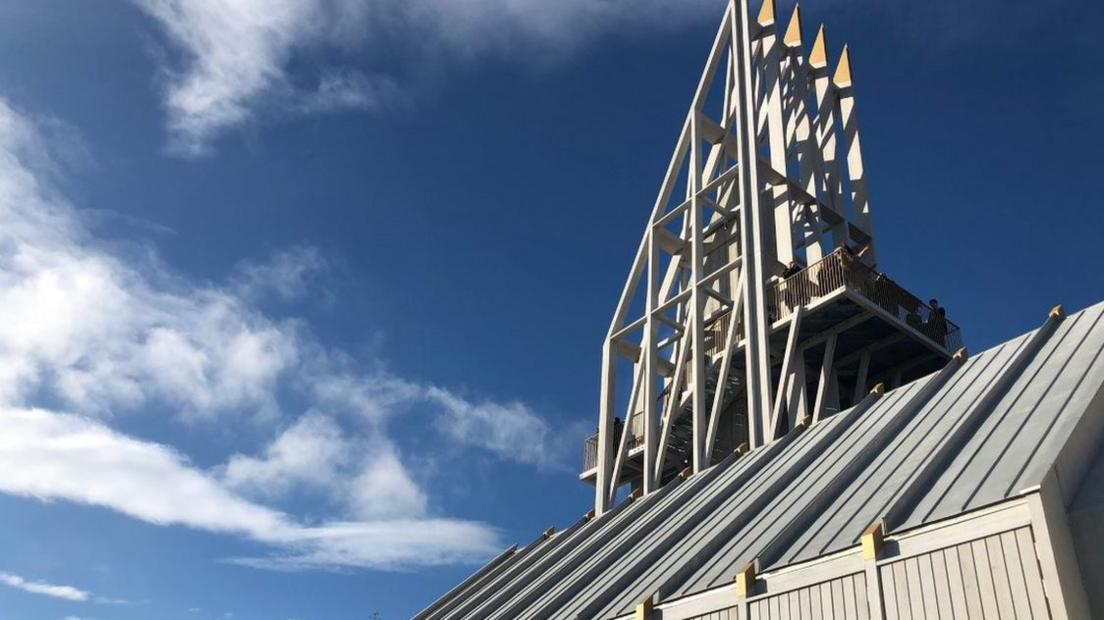Auckland Castle museum explores 6,000 years of faith
- Published

The galleries are located in one of the oldest parts of the castle, which originally housed a wine cellar and prison
A museum dedicated to faith opens this weekend in Bishop Auckland, exploring how beliefs and religion have shaped British lives.
The attraction, housed in Auckland Castle - home of the Bishop of Durham - has been in development for 10 years and spans 6,000 years of faith.
It is the brainchild of banker and philanthropist Jonathan Ruffer.
Mr Ruffer hopes the museum will offer a "safe place" for people to think about faith without fear of judgement.
Describing himself as "very God-y" [sic], Mr Ruffer said a museum dedicated to faith has always been a priority in his plans to revamp Bishop Auckland.
Since 2012, Mr Ruffer has invested millions of his own wealth breathing new life into the former mining town, after buying Auckland Castle and saving a collection of 17th Century Spanish paintings in the process.
His vision has spurred the creation of Kynren, an outdoor arena staging spectacular shows depicting 2,000 years of English history, as well as two art galleries and the revival of a heritage railway line.
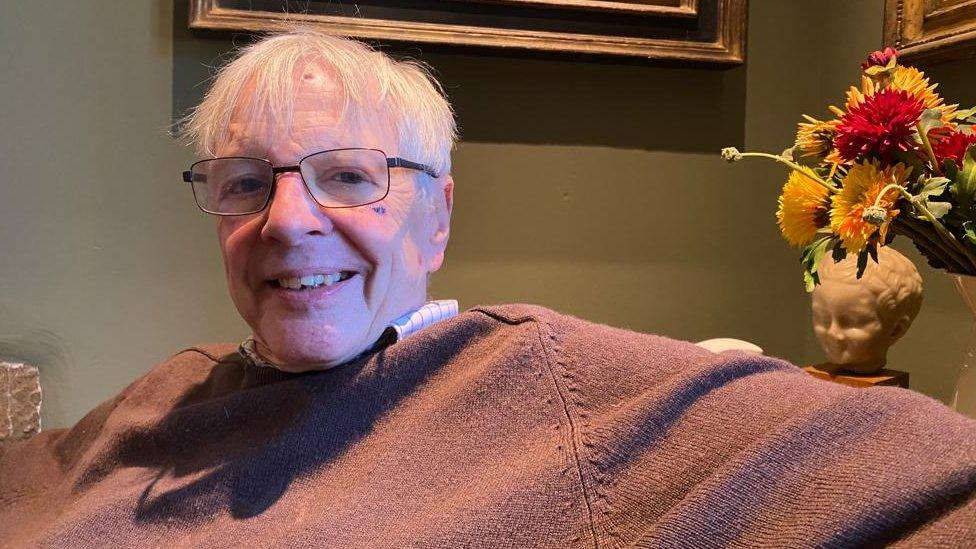
Mr Ruffer, a multi-millionaire who has used his wealth to transform Bishop Auckland, maintains he is "not interested in money"
"I think faith is an encounter with something that is bigger than oneself," said Mr Ruffer, who has said he was called to help the "voiceless" after attending an eight-day spiritual retreat.
"I knew I wanted to have a faith museum and I naively imagined it would be the first to happen - well, it's almost the last thing to happen." he said.
He added: "Everybody lives by some idea of what faith is, and this is a chance to come and see what others think about faith."
"People who come can assess where they are, and perhaps take a step in a new direction - or a quicker step in the same direction."
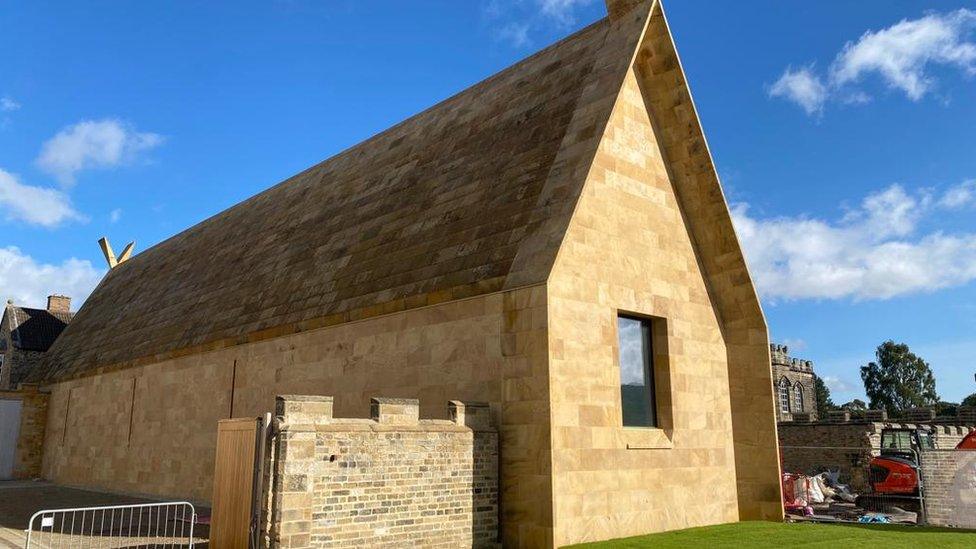
The modern exterior of the museum was designed to look like a medieval tithe barn
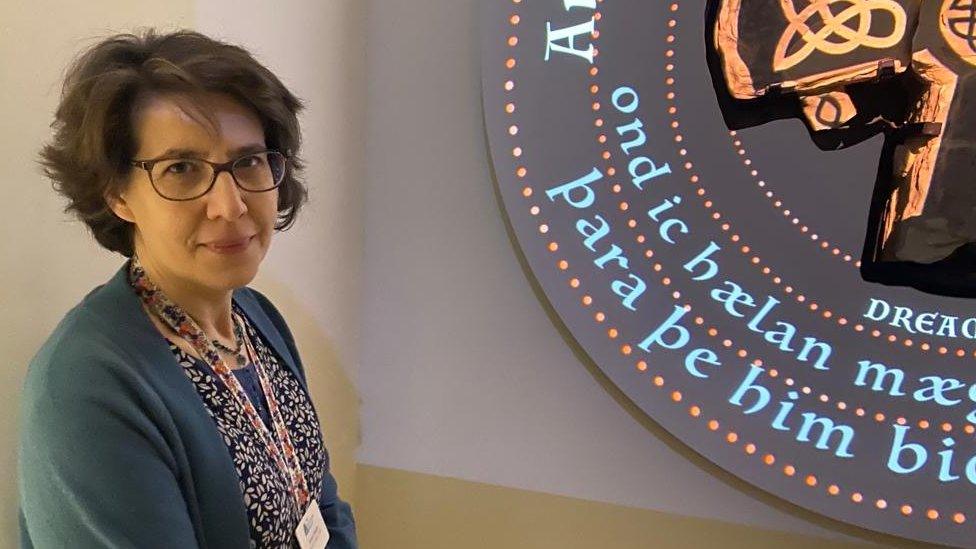
"Faith isn't a thing you can capture in a display cabinet," said senior curator Amina Wright
The Faith Museum was developed with a £12.4m grant from the National Lottery Heritage Fund.
Senior curator Amina Wright called the venue "unique" with its presentation of British history "through the lens of faith".
Religion and belief are not usually talked about in museums, said Ms Wright, adding "faith isn't a thing you can see or touch, capture in a display cabinet, or hang on a wall".
The museum team has worked with local faith communities, academic advisers and museum colleagues to design the galleries - with a timeline starting from the Neolithic period and ending in the year 2000.
About 300 objects, some which have been rarely seen, are on display alongside important national treasures, personal mementos and contemporary commissions.
One of those treasures is a copper bowl dating from the 13th Century.
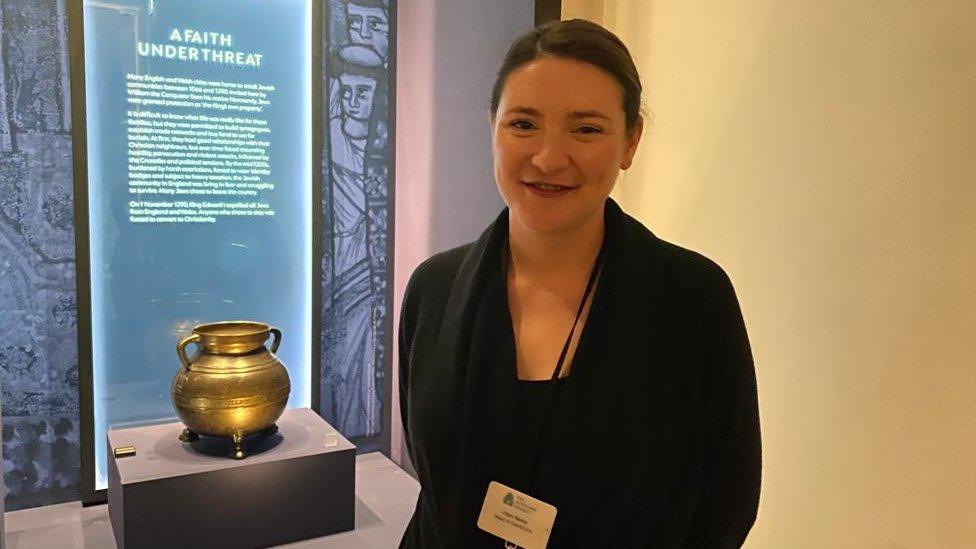
Clare Baron with the copper bowl dating from a 13th Century covert Jewish community
"It's one of the few Jewish objects to have survived," said Clare Baron, head of exhibitions at the museum.
"What's astounding is that we know who it belonged to," she added. "There's an inscription in Hebrew around the top and it says it was owned by Rabbi Joseph, who we know lived in Colchester.
"It represents the covert Jewish community."

Follow BBC North East & Cumbria on Facebook, external, X (formerly Twitter), , externaland Instagram, external. Send your story ideas to northeastandcumbria@bbc.co.uk, external.
Related topics
- Published29 August 2023
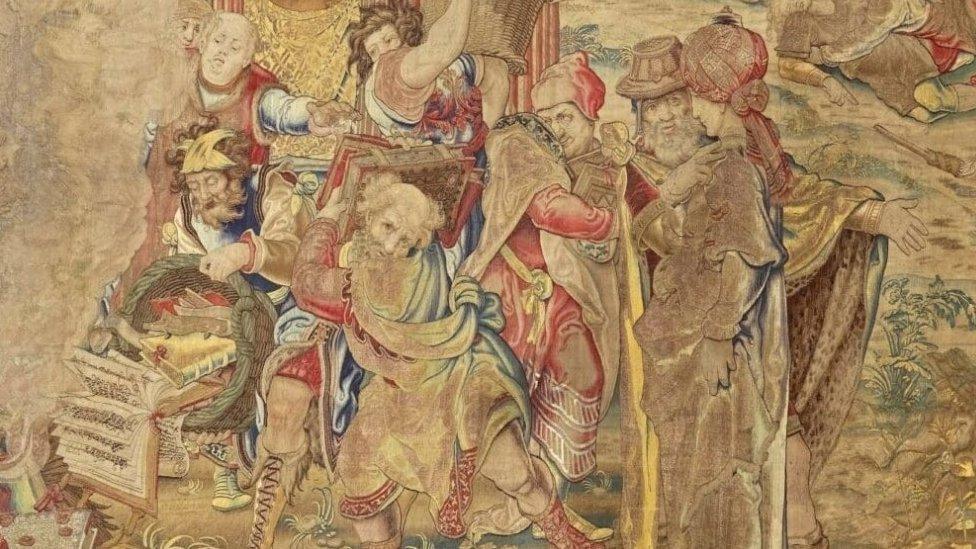
- Published15 March 2022
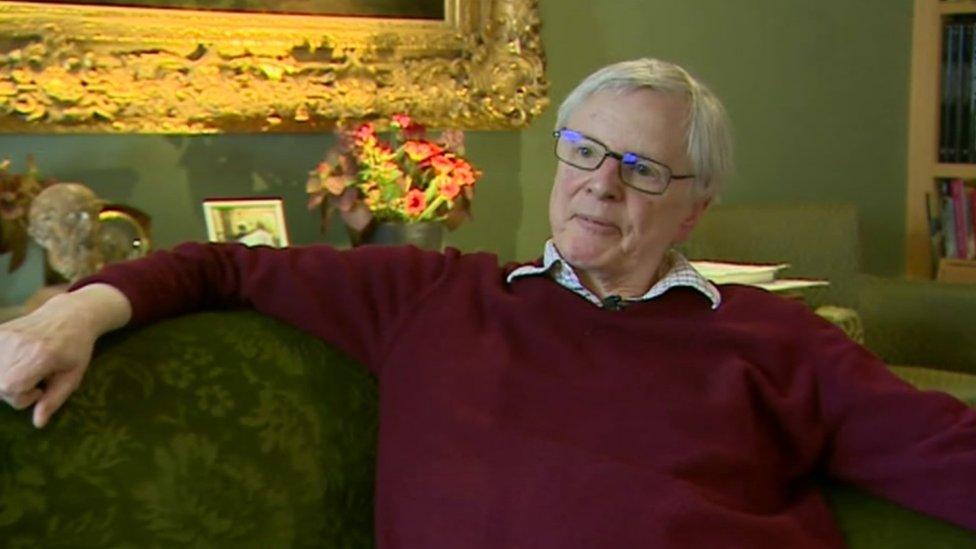
- Published30 November 2020
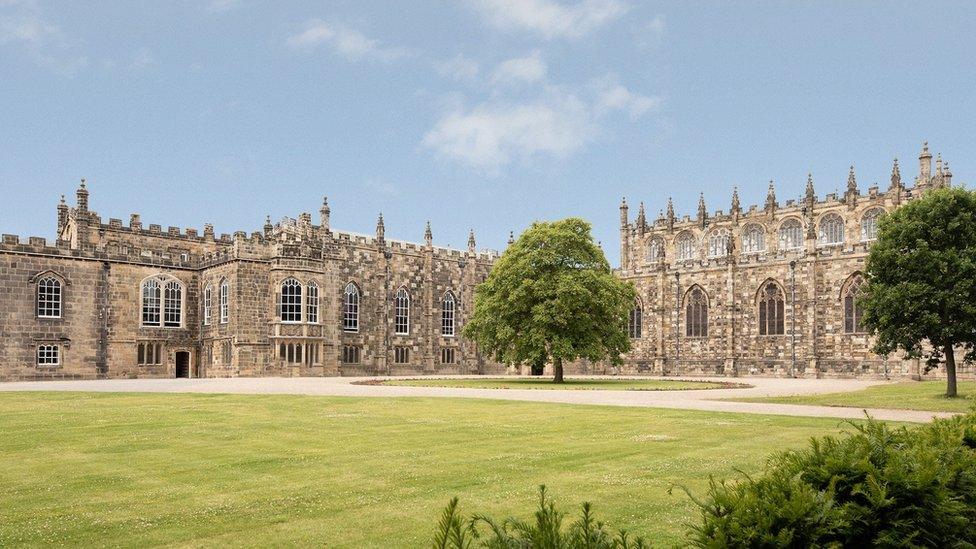
- Published21 October 2018
